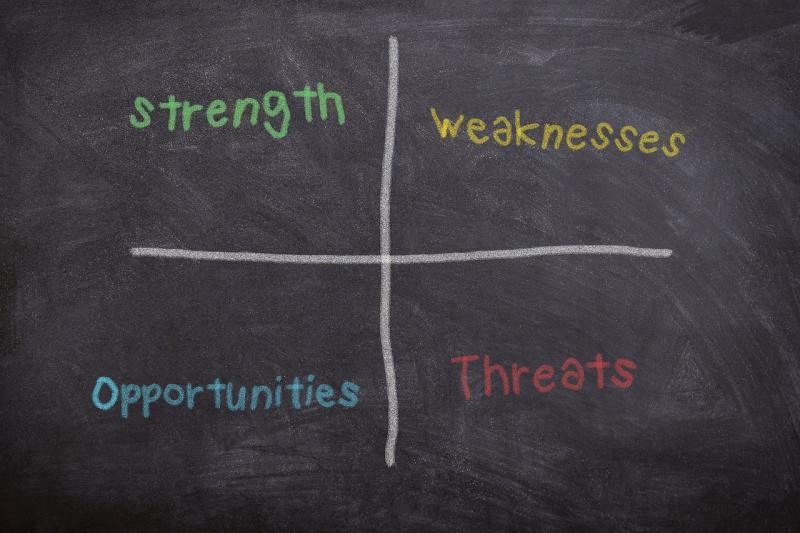
Understanding SWOT
SWOT is a simple tool to analyze factors affecting your success. It stands for Strengths, Weaknesses, Opportunities, and Threats.
Understanding the Parts:
- S: Strengths: Internal advantages you have.
- W: Weaknesses: Internal disadvantages you face.
- O: Opportunities: Positive external factors you can use.
- T: Threats: Negative external factors that could harm you.
SWOT for a Company:
Analyze your entire business operation:
- Strengths (Internal): What makes your company great? (e.g., strong brand, talented team, unique culture, patented technology).
- Weaknesses (Internal): What holds your company back? (e.g., lack of capital, weak marketing, outdated equipment, limited market reach).
- Opportunities (External): What external trends can your company use? (e.g., growing market, new tech, fewer competitors, positive economic changes).
- Threats (External): What external factors endanger your company? (e.g., new competitors, economic downturn, changing regulations, negative media).
SWOT for a Product/Service:
Analyze a specific offering:
- Strengths (Internal): What makes this product/service stand out? (e.g., unique feature, ease of use, lower price, superior performance).
- Weaknesses (Internal): What are its drawbacks? (e.g., missing features, complex to use, high production cost, poor design).
- Opportunities (External): What external factors could help this product/service? (e.g., emerging customer need, technology advancements, partnership potential, new sales channels).
- Threats (External): What external factors could harm this product/service? (e.g., new substitute products, price wars, negative customer reviews, changing consumer tastes).
Why Use SWOT?
Performing a SWOT analysis helps you understand your current situation, identify areas for improvement, capitalize on advantages, and prepare for challenges, whether for your overall company or a specific offering.
